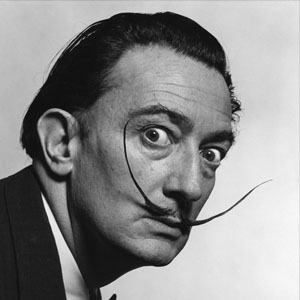
This compelling American artist became known as one of the most fascinating female Surrealists of her time. Originally from Illinois, Dorothea Tanning lived in Paris for the bulk of her early years, having returned to New York upon her marriage to fellow Surrealist artist, Max Ernst in 1946. Throughout the mid-1940s and 1950s, Tanning belonged to a tight-knit group of Surrealists which included Man Ray and his wife, Juliette Browner; they, along with Ernst, were incredibly influential in Tanning’s œuvre during this time.
Her earliest works echoed a style that closely resembled German Expressionism which eventually transformed into a symbolic, ethereal, and feminist Surrealism. Fraught with sharp lines, dramatic coloration, and high-density lighting, Tanning developed her style in such a way that allowed her own energy and enthusiasm to radiate throughout her work; most of her pieces are filled with suspended movement – whether it be a flapping wing from an eagle, a woman’s hair blowing in the wind, or some rustling tree branches. She was able to translate her original point of view into that of the classic Surrealist style that introduced bold, rich color into her canvases, a lighter, more airy sensibility, and an inherent femininity.
The post-war era began to affect Tanning’s work significantly, especially during 1955 when her work radically shifted to reflect a more shattered and splintered take on multidimensional facets of consciousness, reality, and the mind. Aspects of sleep also interested her as well as the nuclear era / space-race that inundated pop culture during the ‘50s and ‘60s.
She was involved in a glittering retrospective of her work at the Centre George Pompidou in Paris in 1974 and more recently took part in an exhibition at the Philadelphia Museum of Art in 2000. Lately, Tanning has forayed into writing and publishing. She released a novel titled, Chasm in 2004.

